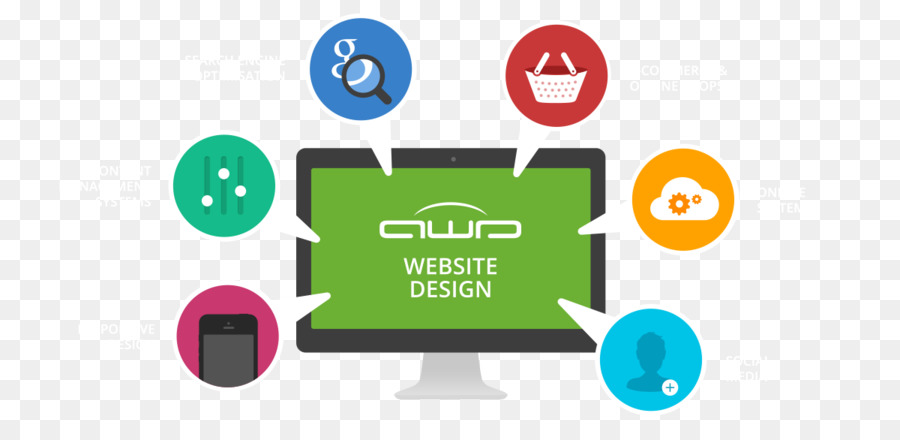The Development Of Web Design: Then And Currently
The Development Of Web Design: Then And Currently
Blog Article
Composed By-Kinney Clarke
In the past, sites were straightforward and concentrated on details. Navigation was straight, and layout was for desktop computers. Currently, customer experience is essential. Data overviews designs for very easy navigation. Receptive formats suit different gadgets. Today, dark setting decreases stress, and minimal menus boost navigation. Interactive functions engage users, and bold visuals attract attention. AI assimilation increases involvement. See how style has actually evolved to boost your online journey.
Very Early Days of Web Design
In the early days of web design, simplicity reigned supreme. Websites were fundamental, with restricted colors, fonts, and formats. The focus got on giving information instead of fancy visuals. Individuals accessed the net through sluggish dial-up links, so rate and capability were essential.
Navigation menus were straightforward, commonly situated at the top or side of the web page. Internet sites were created for computer, as mobile surfing wasn't yet prevalent. seo optimisation was king, and designers prioritized very easy readability over complex layout components.
https://claytonsnhcx.smblogsites.com/26535888/enhance-your-internet-site-s-user-experience-and-strive-for-design-quality-with-our-functional-and-user-friendly-suggestions-and-tricks was the key coding language utilized, and designers had to function within its restrictions. https://griffinyrkdw.blogginaway.com/27069495/be-astonished-by-the-newest-improvements-and-modern-ideas-in-website-design-that-will-assist-you-remain-ahead-of-the-game-discover-what-the-future-holds and interactive features were marginal compared to today's criteria. Sites were fixed, with little dynamic material or tailored individual experiences.
Increase of User-Focused Design
With the evolution of web site design, a shift in the direction of user-focused layout concepts has actually become significantly prominent. Today, developing sites that prioritize customer experience is critical for engaging site visitors and attaining service goals. User-focused design includes recognizing the requirements, choices, and actions of your target market to customize the site's format, web content, and features as necessary.
Designers currently carry out detailed research, such as individual studies and functionality screening, to collect insights and responses directly from users. This data-driven method aids in creating intuitive navigation, clear calls-to-action, and visually enticing user interfaces that reverberate with visitors. By putting the customer at the center of the layout process, sites can provide a much more personalized and satisfying experience.
Responsive design has also emerged as a key aspect of user-focused design, ensuring that internet sites are enhanced for numerous tools and display dimensions. This flexibility boosts access and usability, dealing with the diverse methods individuals engage with internet sites today. Fundamentally, the surge of user-focused style signifies a change towards creating digital experiences that prioritize the requirements and expectations of the end individual.
Modern Trends in Website Design
Discover the most up to date fads forming website design today. One popular fad is dark setting design, providing a smooth and modern-day look while lowering eye strain in low-light settings. Another essential fad is minimal navigating, simplifying menus and enhancing individual experience by concentrating on essential elements. Including micro-interactions, such as computer animated buttons or scrolling results, can create an extra engaging and interactive web site. Responsive design continues to be vital, ensuring seamless user experiences across various tools. Additionally, making use of strong typography and asymmetrical designs can include aesthetic interest and draw attention to details web content.
Incorporating AI innovation, like chatbots for customer assistance or customized suggestions, improves user involvement and enhances procedures. Accessibility has also come to be a significant pattern, with designers focusing on inclusive style practices to deal with varied user requirements. Welcoming sustainability by maximizing internet site performance for speed and performance is another emerging fad in website design. Collaborating with customer responses and information analytics to repeat and boost layout continuously is crucial for remaining pertinent in the ever-evolving electronic landscape. By embracing these modern fads, you can create a visually appealing, easy to use website that resonates with your target market.
Final thought
As you review the evolution of internet site style from the early days to currently, you can see exactly how user-focused style has ended up being the driving pressure behind modern fads.
Welcome the journey of change and adjustment in web design, always keeping the individual experience at the center.
Stay present with the most recent trends and innovations, and never quit developing your strategy to develop aesthetically sensational and easy to use sites.
Develop, adapt, and produce - the future of web design remains in your hands.
